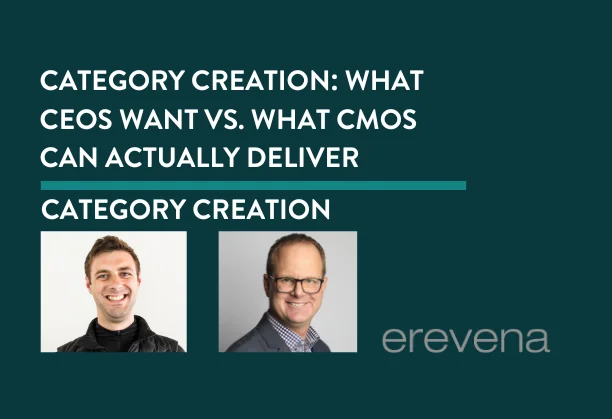Sophie Collins is Chief Marketing Officer at MPB, the largest global platform for buying, selling and trading used photo and video gear. She talks to Erevena’s Flo Bown about the changing role of the CMO that now demands a far broader skill set and why Sustainability is increasingly becoming the CMO’s responsibility.
What prompted your move to MPB as their CMO?
I joined the company in 2018 and was attracted to the role for several reasons. A big part of my decision was that MPB is purpose led and that’s important for me. Of course, my being an amateur photographer was another reason for joining a company that buys, sells and trades used photo equipment. Then, besides really liking the people I met at MPB, there was the fact that it is a performance-focused business and I come from a performance background.
Can you expand on this idea of being performance-led?
If you look back a decade or so, CMOs were more likely brand marketers, and less likely performance marketers rather they often had very good number twos who managed performance channels. That’s beginning to change as companies have become conscious of the need to push performance higher up the agenda.
How does performance marketing differ from brand marketing?
My definition of performance marketing is perhaps a little different to how some might perceive it. Normally, it’s viewed as those channels that drive the last click conversion. This might be PPC, or shopping channels, or affiliates, almost all digital channels. Brand marketing, on the other hand, is the likes of broadcast TV where you’re delivering a brand message but aren’t actually getting people to convert. My take on this is slightly different. I believe all marketing should be performant, albeit against different goals. So, for example, even if you’re running a TV campaign, the days of throwing millions at it and then not being able to prove any uplift are long gone. There must always be a measure of performance.
Can you illustrate how this move towards performance is taking shape?
It’s probably about 15 years since I sat in meeting rooms with big brands that were spending millions on TV advertising without a measurement plan. I’d come from PPC and questioned why anyone would spend so much without measuring the outcome. I knew that if I’d spent that much money on a PPC campaign, I’d be able to give a report about every single click that money had been spent on. Today, I feel that all channels should be thinking about reporting on and measuring what they’re doing, although not all on last click attribution. An addressable TV campaign, for example, should expect some metric uplift that the brand cares about, whether that’s web traffic, sign-ups or something else. The fact that we’re seeing more performance marketing is possibly down to the fact that many of those people, like me, who came up through the digital explosion are now in senior marketing roles.
What other changes have you observed in the role of CMO?
One trend that I’ve seen is the expectation for CMOs to have an extremely broad skillset. In fact, they’re the person on a company’s exec who has to turn their hand to everything. And that’s a really big ask. Beyond the sheer scale of the job itself, it’s the shortest exec role, with the average tenure being under two years. I think it’s all about fit. As a CMO you need to make sure that the company you’re joining is the right match for you. I was lucky to have found that match with MPB but if you’re a different kind of person, both personally and in your approach, to what the brand expects and needs, you’ll struggle. Relationships are also key, particularly with the CEO and CFO.
Tell us more about the importance of this relationship with the CEO
Today’s CMO is much more in the inner circle at exec level and the relationship with the CEO is fundamental to this. You’re expected to be able to talk to everything and solve everything, so there’s a lot of pressure. If you aren’t able to work with the CEO and have shared values, I don’t believe you can do your job. This relationship and the trust between the CMO and CEO are really critical, especially if you’re in a scale-up or a start-up where you’re expected to do a lot at speed. If a lack of trust means that you have to get things signed off at every turn and must justify everything you do, you won’t be able to work at the speed demanded of you.
How do you manage the breadth of your role?
You need to be a certain type of person to be able to wear so many different hats, from external and internal comms to performance and brand marketing, and even sustainability. So, I might be in a meeting one moment talking about lobbying government and then in another discussing pay rise communications, before moving on to figuring out a TV campaign. The context is continually changing.
Of course, it depends on the organisation you’re in. At larger brands where there are distinct teams managing channels you don’t have to constantly switch. So, for example, the internal comms team will work separately from the sustainability team, which will work separately from brand marketing, and so on. But, for me, having to wear so many different hats is what makes the role so interesting and challenging. If you’re overwhelmed by it all, or don’t find it interesting, you’ll end up hating it.
Why has sustainability become the CMO’s responsibility?
The drive to sustainability is an interesting trend and continues the theme of the CMO wearing many different hats. This move into marketing is a skillset that I don’t believe many people are talking about, which frustrates me a lot. Responsibility for sustainability previously sat within the finance function because it had always been a governance and reporting topic. Now, however, it’s increasingly a consumer messaging and brand purpose topic. I took on responsibility for sustainability at MPB largely because I was the most interested in it at leadership level. MPB is purpose-led in a really authentic way, so it is important that we not only communicate our sustainability credentials but truly live them and that’s how I found myself driving packaging choices and electricity supply decisions.
In the past 2.5 years, I’ve really ramped up my knowledge in this area and have spoken to other CMOs who agree that it makes it more authentic if you are leading sustainability by what you want to be able to say about yourself. I’d also add that marketers are generally outgoing people so it makes sense that we’re the ones who can push the agenda and shout about it internally if we’re not delivering what we said we would.
What about the impact of marketing on a company’s carbon footprint?
Marketing – particularly digital media – in itself has a big carbon footprint, so we have a responsibility for measuring and reducing that too. Until last year, I didn’t realise how big an impact our digital media has on our carbon footprint. So, we’ve been working with our media agency, on plans to reduce our digital media carbon footprint. I’ve also spent the last year talking at Adweek and other conferences about carbon reduction in media. Sadly, almost without exception, I’ve yet to find a CMO who cares a great deal about their carbon footprint. I find that really demoralising. There’s a real lack of skill in this area and people need to upskill quickly – we need to care!
You’ve talked about being purpose-led – can you tell us more about that?
Modern consumers want purpose-led brands and that’s seen some brands feel that they have to invent a purpose. The problem with this is that we’re seeing brands talking about their ‘purpose’ in a way that’s completely inauthentic. I’m passionate about working for a company with a truly authentic purpose, such as MPB’s circular economy commitment. For us it’s far easier to articulate our purpose than it is for a company to invent a purpose and then reverse engineer it so that it can be worked into their business model.
How have you helped MPB build on its purpose?
I was lucky to join a company with a circular business model and a CEO-founder who has always been ahead of things like living wage increases and the importance of people enjoying their working lives. But while what we did in terms of the marketplace (recirculating used photo and video kit) was circular and therefore good for the planet, we weren’t doing enough internally for all our business practices to be circular. We’ve worked hard at this and have been working on making our business more circular, for example looking at renewable energy, discussing renewable energy with our couriers, and devising an end-of-life plan for all our warehouse and office equipment.
Congratulations on your 40 over 40 award – what is this for?
It’s Campaign’s awards scheme celebrating the contributions to our industry of people aged 40 and over. The fact that the award recognised the impact I’ve made, notably my efforts in sustainability messaging, was really incredible.
Marketing has a terrible problem with ageism I think. So, I’m delighted at the idea that, after doing this job for 25 years, somebody thinks I should be sticking around! I feel I’m just getting better and better at my job. I think the rise in conversation around ageism in the marketing world is encouraging, particularly more open dialogue around menopause for women.
How is the industry addressing this issue of discrimination against women over 40?
I find it mind-blowing that tackling the approach to menopause in the workplace is still something we have to deal with. Marketing is heavily women-based and, as seniority comes upon you, there are different challenges to be faced, one of which is going through the menopause. It is shocking that women face the prospect of losing their jobs or having their roles diminished because they’re going through the menopause and people simply don’t understand its impact. It’s an interesting topic and becoming even hotter as more people have conversations about it.
As MPB has grown up as a company, we’ve proactively worked on having an inclusive workforce, including age and experience. When I joined the company there were just 60 employees, mostly in their twenties and thirties. We’re now 480 people and there’s a broad spectrum of life stages, which has been quite deliberate on the part of our hiring. I feel passionately about this and diversity in the workplace.
Finally, are you taking more photographs these days?
Yes, joining MPB reignited my love for photography after around eight years of not shooting anything. I got my camera back out and began going on more courses. I’ve since changed all my gear and talk about photography all the time. I’m also judging loads of different photography contests because we sponsor them. It is lovely to work with people who are as passionate about something I’m passionate about.
Share this article:













